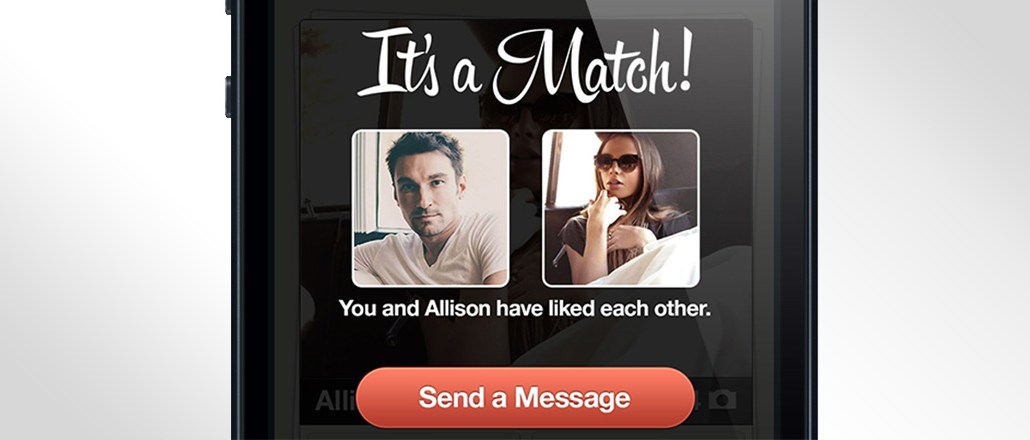Opinion: Why Tinder is about to become the most coveted platform for advertisers

Max Marine is a junior partner and director of business development at Venture1st, a marketing and PR firm.
Marketing managers and agencies worldwide are poised to swipe right for an advertising love-match in Tinder. With 50 million users, 1 billion-plus daily swipes and one in five users swiping right on brands, according to Tinder co-founder and CEO Sean Rad, demand for the dating app’s ad inventory is about to pop.
Tinder’s platform is a boon for advertisers because of its emotionally charged users. Whether it’s loneliness, boredom, sadness, drunkenness or horniness, users open Tinder relentlessly, chasing an ego-boost or a hit of dopamine. Tinder users attempt to alleviate emotional distress and dissatisfaction not addressed by platonic relationships — and many brands can position themselves as that source of relief, if they thread the needle carefully.
Marketers and agencies continuously search for online aggregations of sexually charged men and women but don’t want their brands to be associated with pornography. Although Facebook, Snapchat and Whatsapp may give rise to sexual conversations, these networks do so within the context of previously existing social connections, and the ability to qualify leads is thus limited.
Tinder, on the other hand, offers highly qualified leads within its endlessly novel, sexually charged context. Granted, Tindertising isn’t for home improvement companies and enterprise software solutions. But for sexual or romantic attraction, Tinder presents an unparalleled opportunity: Whereas a user may open Facebook or Snapchat at 2:00 a.m. on a Friday night to share a current experience with friends or vice versa, opening Tinder signals dissatisfaction with the current experience and presents a highly qualified opportunity to many advertisers.
Ad position: web_incontent_pos1
And like all applications that require Facebook’s social login, advertisers can target users by age, location, and interests. But how many platforms enable late-night food providers (Domino’s) and food aggregators (Grubhub) to knowingly serve ads to the sexually frustrated and inebriated?
Furthermore, Tinder’s ability to segment based on behavioral characteristics sweeten an already-delicious deal. According to a survey by the Network Advertising Initiative, conducted with 12 advertising networks, targeted advertisements based on user behavior converted 6.8 percent compared with non-targeted ads at 2.8 percent.
Certain behaviors will command higher rates. For example, Tinder will characterize overswipers and premium users as more likely spend money to address their sexual frustrations. Users with fewer matches may have a higher propensity to swipe right with a brand or offer knowing that a match will boost their self-esteem after multiple rejections. Users who swipe 10-plus times per minute and/or send 2-plus messages per minute will also give advertisers an enhanced data set and enable more targeted offers.
Ad position: web_incontent_pos2
To succeed, however, ad campaigns must consider Tinder’s unique user experience. Since Tinder pioneered the right swipe as a proxy for sexual desire, brands that use sexual imagery and copy will likely have the highest engagement. Unlike most photo or video interstitials that disrupt and intrude, brands have the opportunity to create Tinder interstitials that truly feel native. Imagine Channing Tatum shirtless holding a 6-pack of Bud Light Limes with the tagline, “Hey ladies, want a 6-pack?”
The way Tinder will define and price its inventory, however, remains a mystery. How will the inventory be split between photos and videos? What effect will video ads have on the user experience? What happens after the right swipe: Will the user still be transported to a chat room or to a landing page with an e-Commerce CTA? Despite the looming uncertainties, brands that learn how to navigate Tinder’s demographics, contexts and behaviors will benefit the most.
More in Media

NewFronts Briefing: Samsung, Condé Nast, Roku focus presentations on new ad formats and category-specific inventory
Day two of IAB’s NewFronts featured presentations from Samsung, Condé Nast and Roku, highlighting new partnerships, ad formats and inventory, as well as new AI capabilities.

The Athletic to raise ad prices as it paces to hit 3 million newsletter subscribers
The New York Times’ sports site The Athletic is about to hit 3 million total newsletter subscribers. It plans to raise ad prices as as a result of this nearly 20% year over year increase.

NewFronts Briefing: Google, Vizio and news publishers pitch marketers with new ad offerings and range of content categories
Day one of the 2024 IAB NewFronts featured presentations from Google and Vizio, as well as a spotlight on news publishers.
Ad position: web_bfu